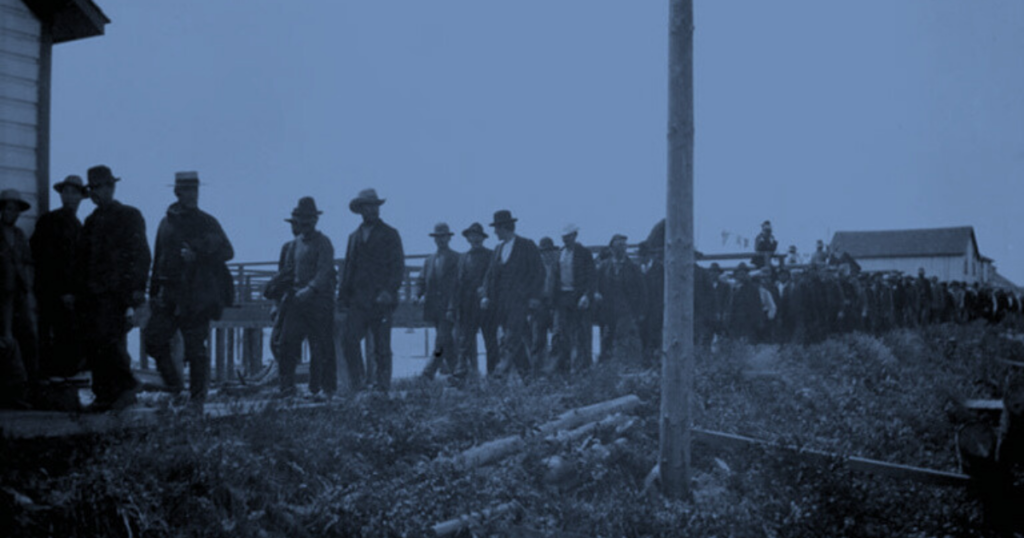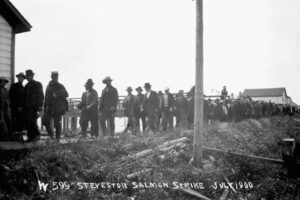Unless you are a workplace lawyer, an employer, or facing difficulties in your place of work, it is not often we get the chance to reflect on the workplace laws of Canada. However, the Labour Day long weekend presents a great opportunity to reflect on the work of labour activists and the laws that have shaped our modern workplaces.
As a workplace lawyer, I’ve studied some of the history and development of workplace law throughout the years to help better understand the laws in place today. This Labour Day, I’d like to share a brief overview of the history of workplace rights to recognize how far we have come in support of workers everywhere.
Early Employment Law in Late-Medieval England
Centuries ago, well before BC’s modern Employment Standards Act was enacted, employment relationships were generally regulated by something referred to as “master and servant” law. Some of the earliest statutes governing employment relationships in England included the Ordinance of Labourers, 1349 (23 Edw. 3) and the Statute of Labourers (1351). These early statutes were very favourable to the employers as they sought to ensure stable and inexpensive supply of labour after an outbreak of the Black Death had severely impacted England’s population. Some of these early features included:
- A maximum rate on what employees could charge the employers.
- A requirement that every person under the age of 60 work;
- A requirement for employees to have the employer’s permission to terminate the employment relationship before the end of the term; and
- A criminal punishment for employees who breached these requirements.
These early statutes eventually contributed to revolts by the working people, most notably the Peasants’ Revolt in 1381.
Labour Day and the Early Labour Movement in Canada
For most of history, there were no restrictions on how many hours an employee could work in a day, no restrictions on how many days an employee could work in a week, and no minimum wage.
The origins of Labour Day in Canada are rooted in a printers’ strike in support of the 9-hour workday. This labour demonstration led to Trade Unions Act in 1872, which was the first piece of legislation to legalize unions in Canada. This was a very important step in workers’ rights for all workers, both unionized and non-unionized alike, as the unions’ fights for minimum wage, overtime pay, and other important rights had impacts far beyond the unionized context.
In 1918, the first minimum wage legislation was passed in British Columbia. It was specifically designed to provide a minimum wage for female workers in certain industries, who were vulnerable to being exploited by their employers.
In 1979, the early version of the Employment Standards Act was created, based on an amalgamation of several acts, including legislation governing the employment of children, minimum wage, hours of work, and maternity protection.
Today’s Labour Laws
Today, the legal landscape on workers’ rights looks significantly different than the earliest legislation. In modern day British Columbia, the Employment Standards Act is the pillar of employee’s rights, protecting employees from excessive work hours, protecting children from hazardous work, and granting employees various rights, including:
- Minimum wage;
- Overtime pay;
- Vacation pay; and
- A day off (or extra pay) for Labour Day (and various other statutory holidays).
The Human Rights Code protects workers from discrimination of various kinds at the workplace, including the following protected grounds: Indigenous identity, race, colour, ancestry, place of origin, political belief, religion, marital status, family status, physical or mental disability, sex, sexual orientation, gender identity or expression, age, or criminal conviction.
The Workers Compensation Act and WorkSafeBC protects workers from unsafe working conditions. Not only do they offer remedies for workers subject to physically unsafe work environments, but they also protect workers from bullying and harassment in the workplace.
Finally, and very importantly on Labour Day, the Labour Relations Code protects workers’ rights to organize and be represented by unions.
As workplace lawyers, we are very familiar with how essential these rights are to employees. In 1987, the Supreme Court of Canada in Reference Re Public Service Employee Relations Act (Alta) [1987] 1 S.C.R. 313 at p. 368 recognized how integral employment is to an individual, stating:
“Work is one of the most fundamental aspects in a person’s life, providing the individual with a means of financial support and, as importantly, a contributory role in society. A person’s employment is an essential component of his or her sense of identity, self-worth and emotional well-being.”
If you’d like to learn more about your rights in the workplace, please reach out to Claire MacLeod at [email protected] or Leah Sorge at [email protected].
And if you’re currently enjoying a day off (or extra pay) this Labour Day, take a moment of gratitude for the labour activists throughout history!

